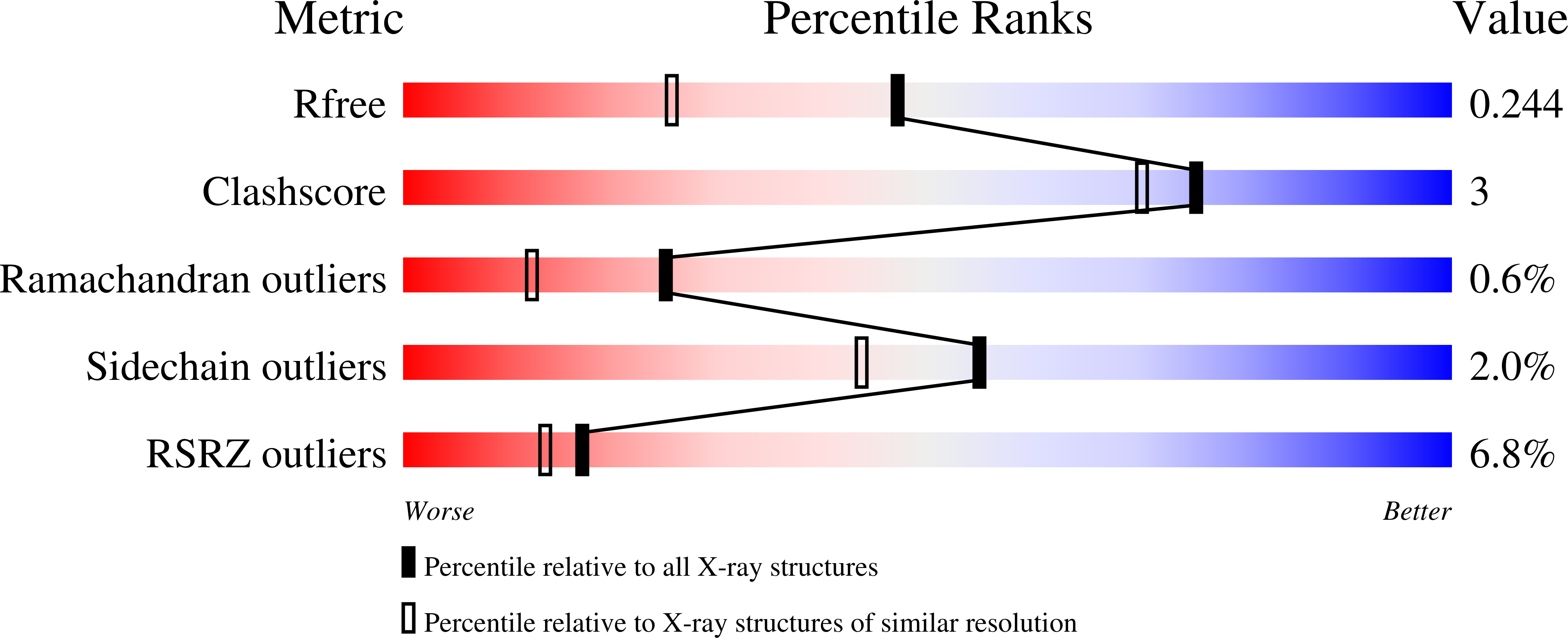Structures of the ribosome-inactivating protein from barley seeds reveal a unique activation mechanism.
Lee, B.G., Kim, M.K., Kim, B.W., Suh, S.W., Song, H.K.(2012) Acta Crystallogr D Biol Crystallogr 68: 1488-1500
- PubMed: 23090398
- DOI: https://doi.org/10.1107/S0907444912037110
- Primary Citation of Related Structures:
4FB9, 4FBA, 4FBB, 4FBC, 4FBH - PubMed Abstract:
Ribosome-inactivating protein (RIP), a defence protein found in various plants, possesses different chain architectures and activation mechanisms. The RIP from barley (bRIP) is a type I RIP and has sequence features that are divergent from those of type I and type II RIPs from dicotyledonous plants and even the type III RIP from maize. This study presents the first crystal structure of an RIP from a cereal crop, barley, in free, AMP-bound and adenine-bound states. For phasing, a codon-optimized synthetic brip1 gene was used and a vector was constructed to overexpress soluble bRIP fusion proteins; such expression has been verified in a number of cases. The overall structure of bRIP shows folding similar to that observed in other RIPs but also shows significant differences in specific regions, particularly in a switch region that undergoes a structural transition between a 3(10)-helix and a loop depending on the liganded state. The switch region is in a position equivalent to that of a proteolytically susceptible and putative ribosome-binding site in type III RIPs. Thus, the bRIP structure confirms the detailed enzymatic mechanism of this N-glycosidase and reveals a novel activation mechanism for type I RIPs from cereal crops.
Organizational Affiliation:
School of Life Sciences and Biotechnology, Korea University, Seoul 136-701, Republic of Korea.






















